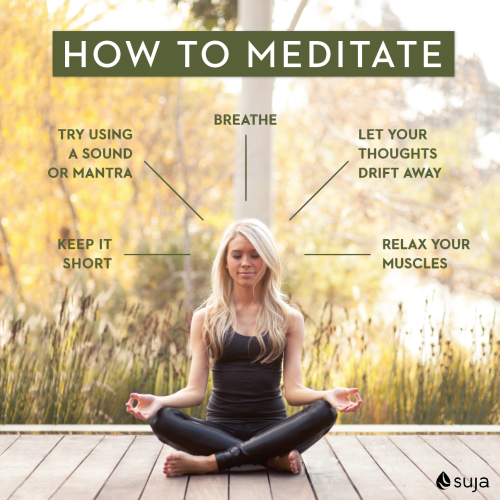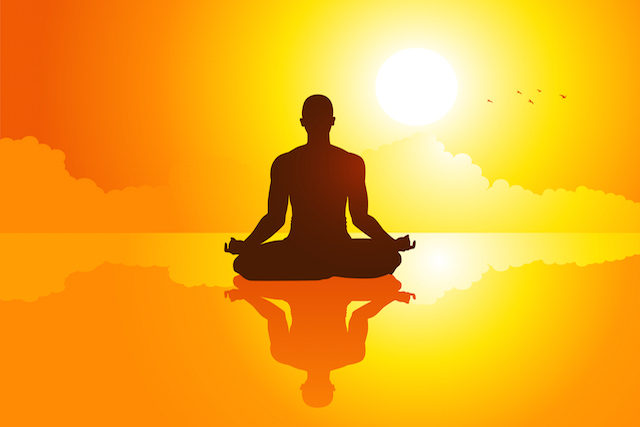How to Meditate? Understanding Mindfulness for Everyday Life
How to Meditate? Understanding Mindfulness for Everyday Life
Blog Article
How to Meditate: A Detailed Approach to Achieving Mindfulness and Tranquility
Meditation functions as an effective tool for accomplishing mindfulness and emotional calmness in a busy world. By comprehending the basic principles and methods associated with reflection, individuals can cultivate a method that boosts their overall wellness. This conversation will certainly outline necessary actions, from developing a conducive atmosphere to integrating reflection right into day-to-day regimens. As we explore these components, it ends up being clear that the trip to mindfulness is not just concerning the act of sitting in silence, yet rather regarding promoting a much deeper connection with oneself and the globe around us. What might this transformation require?
Comprehending Meditation
Comprehending meditation involves understanding its essential principles and techniques, which work as the structure for the technique. At its core, reflection is a psychological workout focused on promoting relaxation, building inner power, and creating empathy and insight. The method motivates individuals to focus their attention, frequently through techniques such as deep breathing, visualization, or mantra repetition.
Reflection can be classified into various styles, consisting of mindfulness, transcendental, and loving-kindness reflection, each with distinct purposes and techniques. Mindfulness reflection stresses present-moment understanding and non-judgmental observation of thoughts and sensations, while copyright includes using specific concepts to transcend ordinary mind. Loving-kindness reflection concentrates on developing a perspective of love and empathy towards oneself and others.
No matter of the technique used, the main objective stays consistent: to grow a deeper understanding of the mind and its patterns. This self-awareness promotes emotional durability, clarity of idea, and a profound feeling of calm (How to meditate?). By recognizing these principles and strategies, individuals prepared for a successful reflection technique that can considerably enhance their overall health
Preparing for Your Method
Prior to beginning your meditation method, it is vital to create an environment helpful to focus and leisure. Select a quiet space where you are unlikely to be disrupted. This could be a corner of an area, a yard, or any type of place that evokes a sense of peace. Make certain that the location is tidy and free of clutter, as a tidy setting can help get rid of the mind.
Consider the illumination, as natural light can boost your state of mind and power. Soft, cozy lighting is frequently much more soothing than rough fluorescent lights. Additionally, choose a comfortable temperature, making sure that you are neither as well warm nor as well chilly.
Integrating aspects that promote serenity can even more enhance your experience. This may include soft cushions or blankets for comfort, along with relaxing aromas from necessary oils or scent. It can also be useful to have a timer set for your reflection session to stop distractions from clock-watching.
Standard Meditation Methods

An additional effective method is body check meditation. This includes emotionally scanning your body from head to toe, observing any kind of locations of tension or discomfort and knowingly relaxing those muscle mass. This method cultivates a much deeper connection between your mind and body.

Finally, loving-kindness meditation concentrates on cultivating compassion in the direction of yourself and others. Silently repeat expressions of goodwill, boosting psychological wellness and interconnectedness. Each of these techniques offers as a foundation for your reflection journey, allowing you to discover the method that reverberates best with your individual practice.
Keeping Focus and Mindfulness

Establishing a specialized meditation area can improve the ability to maintain mindfulness. A quiet, uncluttered environment minimizes interruptions, enabling much deeper immersion in the method. Furthermore, setting a time limit can help take care of assumptions; beginning with much shorter sessions might alleviate the shift into longer practices.
Making use of strategies such as body scanning or observing experiences can likewise strengthen mindfulness. These techniques encourage professionals to remain existing and involved with their physicality, securing their focus in the minute. Regular practice is essential; the mind builds strength in time, developing a stronger ability for emphasis.
Incorporating Meditation Into Every Day Life
Integrating meditation right into life can change regular activities right into possibilities for mindfulness and self-reflection. By integrating mindfulness practices right into common jobs, individuals can grow a higher the original source sense of visibility and serenity among the busyness of everyday life.
Begin by recognizing moments throughout your day where you can practice and pause mindfulness. Even mundane tasks like walking or washing meals can come to be opportunities for reflection by routing your focus to the experiences of movement and the noises bordering you.
In addition, reserving specialized times for reflection can enhance its practice. Begin with brief sessions, progressively raising duration as you become much more comfy. Usage tips or signs-- like a specific time of day or a calming sound-- to establish uniformity.
Ultimately, the goal is to weave mindfulness into the material of everyday life, permitting you to come close to each minute with purpose, therefore enhancing your overall feeling of health and quality.
Final Thought
In final thought, efficient meditation requires a quiet environment, a comfy setting, and an emphasis on the breath. Normal reflection, also in quick sessions, cultivates a deeper link to the existing minute, eventually leading to higher calmness and psychological quality in everyday life.
Meditation can be classified into various designs, consisting of mindfulness, transcendental, and loving-kindness reflection, each with distinct objectives and methods. Mindfulness meditation highlights present-moment understanding and non-judgmental monitoring of sensations and thoughts, while copyright entails the usage of particular rules to go beyond ordinary idea procedures.With your reflection space prepared, it's time to explore different standard meditation techniques that can assist grow mindfulness and inner peace.Consistently maintaining focus and mindfulness throughout reflection can be this post challenging, particularly for those brand-new to the technique.Establishing a devoted reflection room can boost the ability to preserve mindfulness.
Report this page